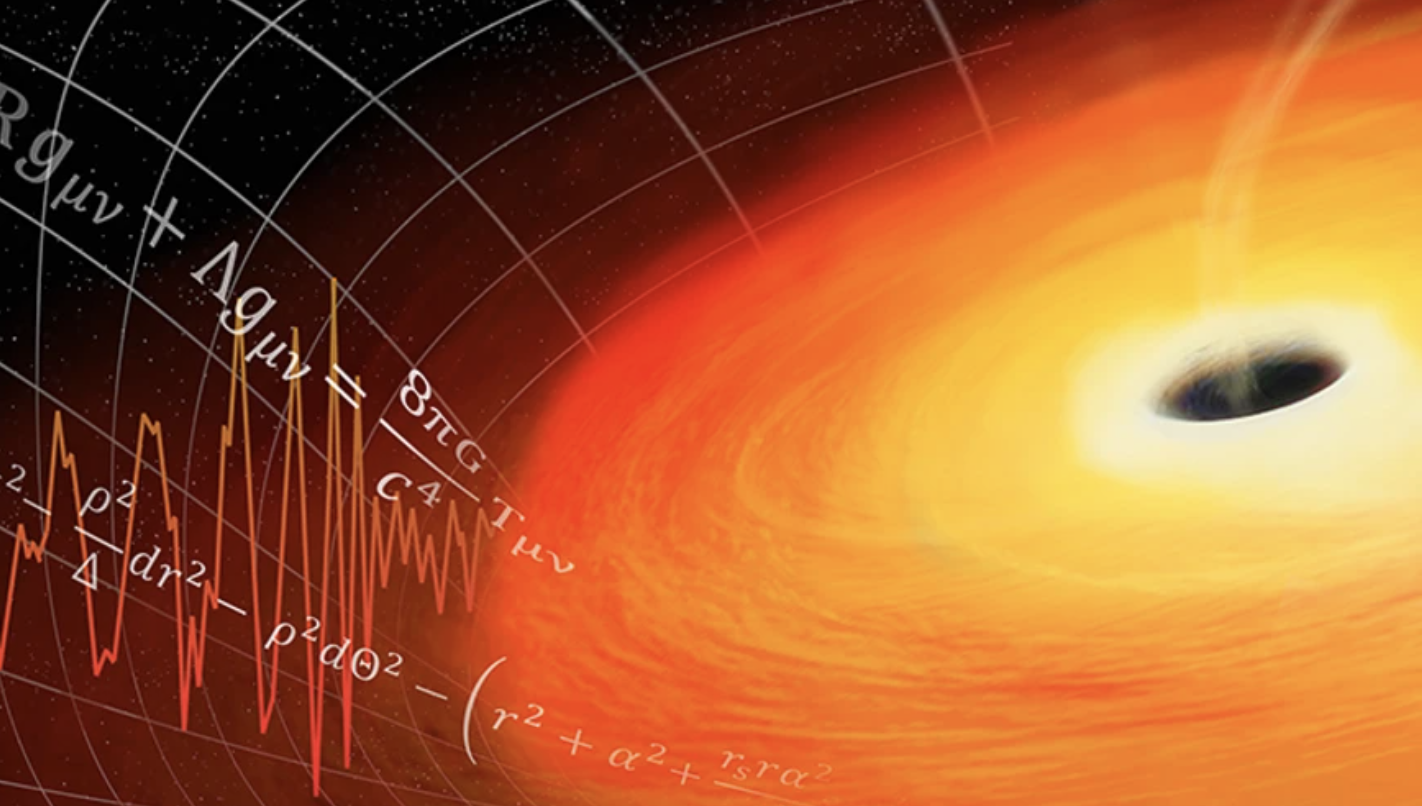UMass Dartmouth professor and students discover fast-moving black hole
Professor Scott Field Ph.D., and graduate students Tousif Islam and Feroz H. Shaik found the first evidence for a large recoil velocity from a black hole merger

UMass Dartmouth Assistant Professor Scott Field, Ph.D., and graduate students, Tousif Islam and Feroz H. Shaik, recently partook in a study that found the first evidence of a black hole moving at high-speed, clocked at roughly 3 million miles per hour. This speed is a result of a collision between two black holes. Their paper is the first to provide evidence with actual astronomical data from a black hole merger, named GW200129, providing the first confirmation of theories that trace back to Albert Einstein’s 1915 equations of general relativity.
“Black holes experience a gravitational pull much like here on Earth. If you want to throw your car keys into outer space, you would need to throw them at least 25,000 miles per hour, the escape velocity of Earth. Anything less than that, Earth’s gravitational pull will bring your keys back down to the ground,” said Field. “For a black hole to escape the gravitational pull of its host star cluster or galaxy, you need even more velocity. This is the first observational evidence of a black hole moving fast enough it could theoretically be ejected from its host star cluster or galaxy, under the right circumstances.”
The reason this hadn’t been observed before is primarily due to the lack of technology available to record such data. Laser Interferometer Gravitational-Wave Observatory (LIGO) machines started observing gravitational waves scattered around our globe in 2015. Since then, the detectors and data analysis tools have been steadily improving.
Field, Islam, Shaik, and some of the same team as this paper are involved in another on-going project that uses a new gravitational wave detection model to analyze additional evidence from data LIGO machines have observed. In this project, the GW200129 signal had interesting properties, which prompted a targeted study into what was going on with this event.
“We weren’t setting out to look for this,” said Field. “There were about 90 signals we were analyzing and this one led to a brand-new discovery.”
Rather than burying a discovery in a longer paper, the team decided to publish this result separately, which is currently undergoing peer review. The larger study and analysis remains on-going, with Islam, Shaik, lead author Vijay Varma of the Max Planck Institute for Gravitational Physics in Potsdam Germany, and other collaborators working to finish writing up the results.
“I’ve been working with Tousif and Feroz for a few years each on different projects, and it’s safe to say this is the biggest astrophysical discovery any of us have been involved with,” said Field. “Both of them share an area of expertise in using codes, programs, and interfacing LIGO’s data to estimate gravitational wave parameters that helped make this discovery.
“Analyzing each signal takes upwards of a week on a personal laptop, so their work relied heavily upon computing resources in the Center for Scientific Computing and Data Science Research at UMass Dartmouth.”
Field is a member of the mathematics department at UMassD, but physics problems, he says, are what he most enjoys applying numerical algorithms to. As a graduate student, he worked to design numerical algorithms to simulate gravitational waves and black holes, igniting his interest in astrophysics.
“At that time there wasn’t any data, as LIGO machines weren’t up and running yet, but there was a lot of interest in developing software, models, and specialized algorithms in anticipation for the data eventually containing gravitational wave signals,” said Field. “Now that there’s more data, there’s also more opportunities for this effort to have a direct impact on gravitational wave astronomy.”
Field's team has created a series of visual graphics resembling and explaining the "kick" and "spin" posteriors for GW200129.
UMassD’s footprint in gravitational wave data
The University of Massachusetts Dartmouth has a strong connection to the study of gravitational wave data. Two of the three founders of LIGO machines (and Nobel Prize winners), Kip Thorne, and Rainer Weiss have visited UMassD’s campus to discuss the physics of black holes and gravitational waves over the last six years.
UMassD Adjunct Professor Gaurav Khanna made a breakthrough in black hole research last year by finding unique traits that uncovered a loophole in the “no hair” theorem, Professor Robert Fisher recently received a $550k research grant from NASA to shed light on the origin of exploding stars, professors Dana Fine and J.P. Hsu have conducted extensive research on aspects of quantum and Yang-Mills gravity, and Collin Capano, whose published numerous papers analyzing alternative theories of gravity that may better describe Einstein’s theory of general relativity, recently joined UMassD’s Center for Scientific Computing and Data Science Research and is part of the UMass-URI Gravity Research Consortium (U2GRC).
“There’s a great community of people at UMass Dartmouth and in our region working on different aspects of gravitational science, including: astrophysics, theory, and numerical and computational modeling,” said Field.
“Especially given that we’re not a huge institution, it’s impressive to have all these incredible researchers here working on a diverse range of related astrophysics problems. I’m hoping we can build off of this diverse expertise and grow UMass Dartmouth into an internationally recognized center for research in gravity.”